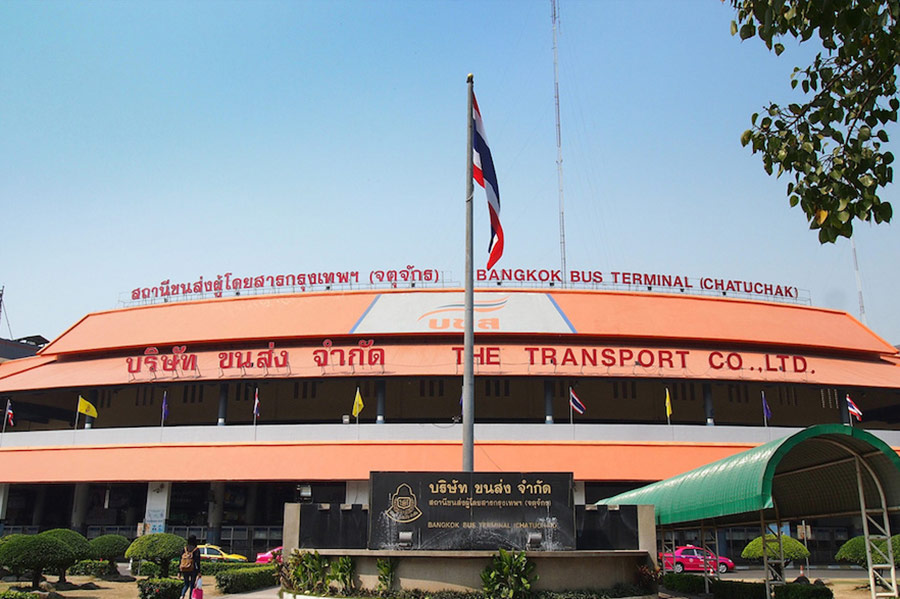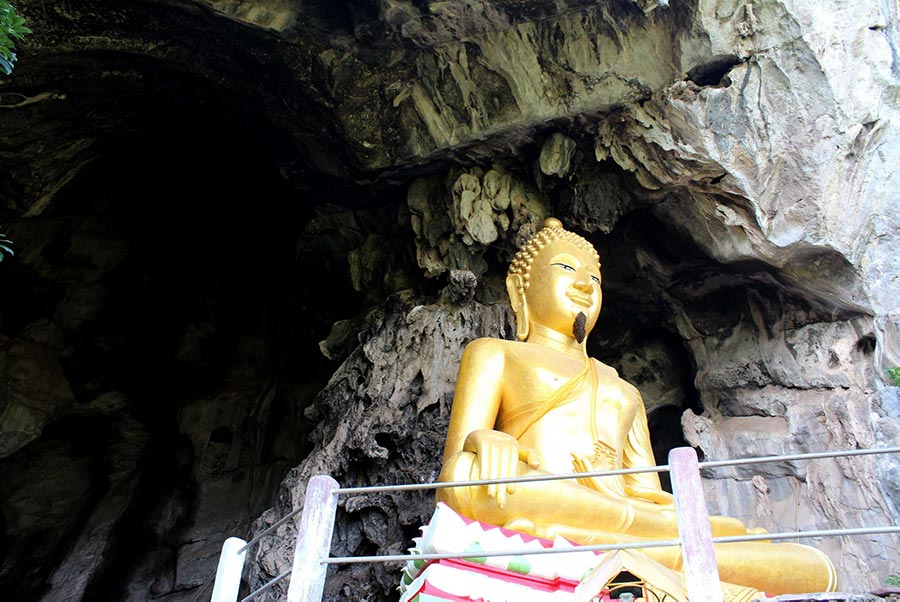Nong Bua Lamphu

Nong Bua Lamphu (also known as Nakhon Khuen Khan Kab Kaew Bua Ban, "city with many waters and lotus blossoms", or Kamut Muang Sai Buri Ram) is a province in the Isan region of Thailand. The province is located in the center of the Khorat Plateau in northeastern Thailand.
The town of Nong Bua Lamphu is situated on the western edge of Isaan, approximately more than 600 km away from the capital city Bangkok. The province shares borders with Udon Thani province to the west, Khon Kaen province to the south, and Loei province to the east. Nong Bua Lamphu is situated in the Mekong River basin and has flat terrain, with some small hilly areas.
 Nong Bua Lamphu maps
Nong Bua Lamphu maps
The population is predominantly Thai and Isan ethnicities. Agriculture is the main industry of the province, with rice farming and fruit cultivation such as mangoes, coconuts, and oranges being prominent. It is a beautiful and interesting area, with a unique history and culture.
Read more: Thailand Excursions
Nong Bua Lamphu was part of Udon Thani province until it was chosen as the capital of the newly established province on December 1, 1993. In the past, the town has experienced significant historical events and is a place of important clashes between kingdoms and ethnic groups.
The town was first known approximately 900 years ago. After the fall of Ayutthaya, the city was the site of clashes in 1767 between two Laotian princes (Phra Woa and Phra Tha) and King Chao Siribunyasan, who assembled armies and their followers and fled from Nong Bua Lamphu to Laos (the kingdom of Vientiane) to revolt against King Chao Siribunyasan. They built a fortress to protect themselves from Laotian attacks. During the reign of King Chulalongkorn (Rama V), in 1906, a new city was established named Nong Bua Lamphu. In 1993, the town was chosen as the capital of the newly established province.
Nong Bua Lamphu city is located in northeastern Thailand and typically experiences a tropical monsoon climate. The weather here is divided into two main seasons:
- Dry season (November - April):
During the dry season, the weather is often dry and sunny. The highest temperatures can be reached in April, with average temperatures ranging from 30-35 degrees Celsius. Daytime can be hot, especially around noon, but nights can be cooler.
This is the ideal season to visit Nong Bua Lamphu as the weather is usually warm and dry. Travelers can enjoy visiting local tourist attractions such as temples, natural parks, and agricultural areas without worrying about rain or bad weather.
- Rainy season (May - October):
The rainy season in this area usually begins in May and lasts until October. During the rainy season, the weather can be humid and rainy, especially in the afternoon and evening. Heavy rains and strong winds occur frequently, especially towards the end of the rainy season (September - October).
During the rainy season, there may be more rain and unstable weather, especially in September and October. Depending on personal preferences, you may decide to travel during the rainy season if you want to avoid the crowds of tourists and enjoy the cool and fresh atmosphere of the rainy season.
Especially during the transition from the dry season to the rainy season (April - May) and from the rainy season to the dry season (October - November), the weather can be unstable and may experience sudden changes, such as sudden rain or a sudden increase in temperature.
 Nong Bua Lamphu Fishing Park
Nong Bua Lamphu Fishing Park
Remember to check the specific weather forecast before traveling to Nong Bua Lamphu and prepare appropriate personal belongings for the expected weather conditions.
To travel to Nong Bua Lamphu, visitors can utilize public transportation or private vehicles.
- Buses are the most convenient mode of transportation from the capital city Bangkok to Nong Bua Lamphu. The travel time from Bangkok to Nong Bua Lamphu by bus is approximately 8-9 hours. Depending on traffic and weather conditions, the bus may arrive earlier or later than scheduled. Buses from Bangkok to Nong Bua Lamphu depart from Mo Chit Bus Terminal (Chatuchak) or the Nakhonchai Air company office.
 Mo Chit Bus Terminal
Mo Chit Bus Terminal
In addition, travelers can choose from several other modes of transportation:
- By train: Although there is no train station directly in Nong Bua Lamphu, travelers can use train services to reach the nearest train station and then transfer to other public transportation or taxis to reach their destination.
- By taxi: If travelers want to move conveniently and quickly from nearby cities such as Udon Thani or Khon Kaen, they can use taxi services.
- By personal motorbike or car: If travelers plan to drive themselves or rent a motorbike or car, they can travel from nearby cities to Nong Bua Lamphu using maps and road guides.
- By airplane: Although there is no airport in Nong Bua Lamphu, travelers can fly to Udon Thani Airport and then use public transportation or taxi services to reach Nong Bua Lamphu.
Please note that the choice of transportation depends on individual preferences, budget, and time constraints. Be sure to check the schedule and services of each type of transportation before making a decision.
Nong Bua Lamphu may not have as many famous attractions as larger cities, but there are still interesting places for visitors to explore. Here are some popular destinations in Nong Bua Lamphu:
- Wat Tham Erawan Temple: This temple is located inside a cave, renowned for its large Buddha statues and unique architecture. Visitors can hike up the mountain to admire the surrounding landscape and enjoy the peaceful atmosphere of the temple.
- Wat Sa Prasan Suk Temple: This temple boasts beautiful architecture and is situated amidst a spacious garden. Visitors can visit the temple and explore the surrounding gardens to enjoy the serene environment.
 Wat Tham Erawan Temple
Wat Tham Erawan Temple
- Lam Pao Dam Park: This is a natural park located by the Lam Pao Lake, where visitors can enjoy the fresh air and relaxation. Visitors can rent kayaks or participate in other water activities on the lake.
- Ethnic Minority Villages: Nong Bua Lamphu is also home to many ethnic minority villages, such as the Mhong village. Visitors can visit these villages to learn about their cultures and traditional customs.
Additionally, visitors can enjoy the serene natural environment by hiking or mountain climbing in the surrounding mountainous areas. Despite having fewer attractions than larger cities, Nong Bua Lamphu still offers unique experiences and attracts tourists with its natural beauty and local culture.
Nong Bua Lamphu is not famous for a specific type of specialty like some other regions of Thailand. However, like many rural areas of the country, Nong Bua Lamphu has some local agricultural products and specialties that visitors can enjoy. Here are some famous local products and specialties of the region:
- Rice: Nong Bua Lamphu is a major rice-producing region, so rice is a local specialty here. Jasmine rice is a famous type of Thai rice and can be a good choice to buy as a gift.
- Mangoes: Mangoes are a popular fruit widely cultivated in this area. Mangoes from Nong Bua Lamphu are often considered to have a delicious and aromatic flavor.
- Wildflower Honey: The rural areas surrounding Nong Bua Lamphu have many pristine forests where wildflower honey is produced. Honey is a healthy specialty and can be a unique gift from this region.
- Coconut-based Dishes: Some coconut-based dishes such as coconut ice cream, coconut water, and other dishes can be found and purchased at local markets.

Mango
Additionally, products such as coffee, macadamia nuts, and various vegetables are also grown and produced in this area. Remember to check local shops or traditional markets when visiting Nong Bua Lamphu to buy and try these local specialties.
Read more: Top 10 must-try dishes from Thailand
When visiting Nong Bua Lamphu, there are various accommodation options available depending on budget, preferences, and desired amenities. Some popular choices for travelers include hotels, guesthouses, resorts, or homestays.
Additionally, travelers can choose other forms of accommodation such as bungalows or cabins in nature, or camping sites. These will be good options for travelers who enjoy experiencing and love nature.
Travelers should book accommodation in advance or check room availability before arriving in Nong Bua Lamphu, especially during peak tourist seasons.
In general, Nong Bua Lamphu is an ideal destination for those who want to learn about and experience life in rural Thailand, with its peaceful surroundings, traditional culture, and diverse landscapes.
If you are interested in experiencing and exploring Nong Bua Lamphu, please contact Asia King Travel for advice and assistance.
Read more: 5 days tours in Thailand